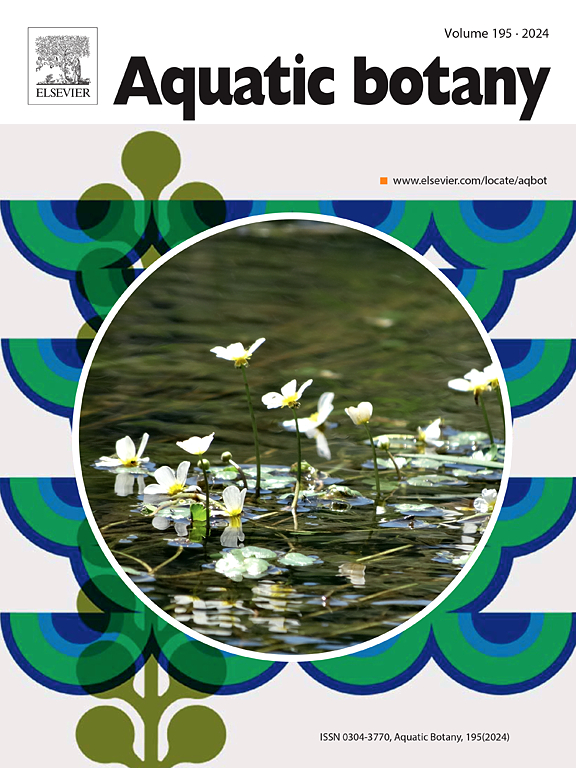Neotypification of the Sporolithon mediterraneum Heydrich (Sporolithales, Corallinophycidae, Rhodophyta) and the status of Sporolithon in the Mediterranean Sea
IF 2.6
4区 生物学
Q2 MARINE & FRESHWATER BIOLOGY
引用次数: 0
Abstract
A neotype specimen is designated for the coralline alga Sporolithon mediterraneum Heydrich (Sporolithales, Corallinophycidae, Rhodophyta) and critically examined here, since the original holotype specimen apparently has been destroyed. The neotype specimen was collected in a mesophotic rhodolith bed near Gorgona Island (Tyrrhenian Sea, Mediterranean). Additional specimens were collected in a rhodolith bed in the Menorca Channel (Western Mediterranean) and were used to confirm the identification of the neotype. Molecular analyses of psbA and rbcL with all Sporolithon species for which there are currently sequence data, including S. ptychoides and S. molle supported the designation of this neotype and the circumscription of this Mediterranean species. Additional specimens from Menorca Channel were resolved as conspecific based on psbA sequences. The morpho-anatomical data presented indicated that S. mediterraneum can be also distinguished from the type species Sporolithon ptychoides Heydrich and Sporolithon molle (Heydrich) Heydrich, the only two other species previously reported from the Mediterranean Sea, by the occurrence of 5–6 cell paraphyses and larger stalk cells. A consideration of the status of Sporolithon in the Mediterranean region is also discussed.
地中海地中海孢子石的新分型及孢子石在地中海的地位
珊瑚藻Sporolithon mediterraneum Heydrich (Sporolithales, Corallinophycidae, rhodophyia)的新模式标本被指定并在这里进行了严格的检查,因为原来的完整模式标本显然已经被破坏了。该新型标本采集于地中海第勒尼安海戈尔戈纳岛附近的一个中孔罗石层。在梅诺卡海峡(西地中海)的rhodolith床中收集了其他标本,并用于确认新类型的鉴定。对包括S. ptychoides和S. molle在内的所有有序列数据的孢子石物种的psbA和rbcL分子分析支持了该新型的命名和该地中海物种的界定。其他来自Menorca海峡的标本根据psbA序列被解析为同种。形态学解剖数据表明,地中海S. mediterraneum还可以与模式种Sporolithon ptychoides Heydrich和Sporolithon molle (Heydrich) Heydrich(地中海仅有的另外两个物种)区分开来,因为存在5-6个细胞畸形和较大的柄细胞。本文还讨论了地中海地区孢子石的现状。
本文章由计算机程序翻译,如有差异,请以英文原文为准。
求助全文
约1分钟内获得全文
求助全文
来源期刊

Aquatic Botany
生物-海洋与淡水生物学
CiteScore
3.80
自引率
5.60%
发文量
70
审稿时长
6 months
期刊介绍:
Aquatic Botany offers a platform for papers relevant to a broad international readership on fundamental and applied aspects of marine and freshwater macroscopic plants in a context of ecology or environmental biology. This includes molecular, biochemical and physiological aspects of macroscopic aquatic plants as well as the classification, structure, function, dynamics and ecological interactions in plant-dominated aquatic communities and ecosystems. It is an outlet for papers dealing with research on the consequences of disturbance and stressors (e.g. environmental fluctuations and climate change, pollution, grazing and pathogens), use and management of aquatic plants (plant production and decomposition, commercial harvest, plant control) and the conservation of aquatic plant communities (breeding, transplantation and restoration). Specialized publications on certain rare taxa or papers on aquatic macroscopic plants from under-represented regions in the world can also find their place, subject to editor evaluation. Studies on fungi or microalgae will remain outside the scope of Aquatic Botany.
 求助内容:
求助内容: 应助结果提醒方式:
应助结果提醒方式:


